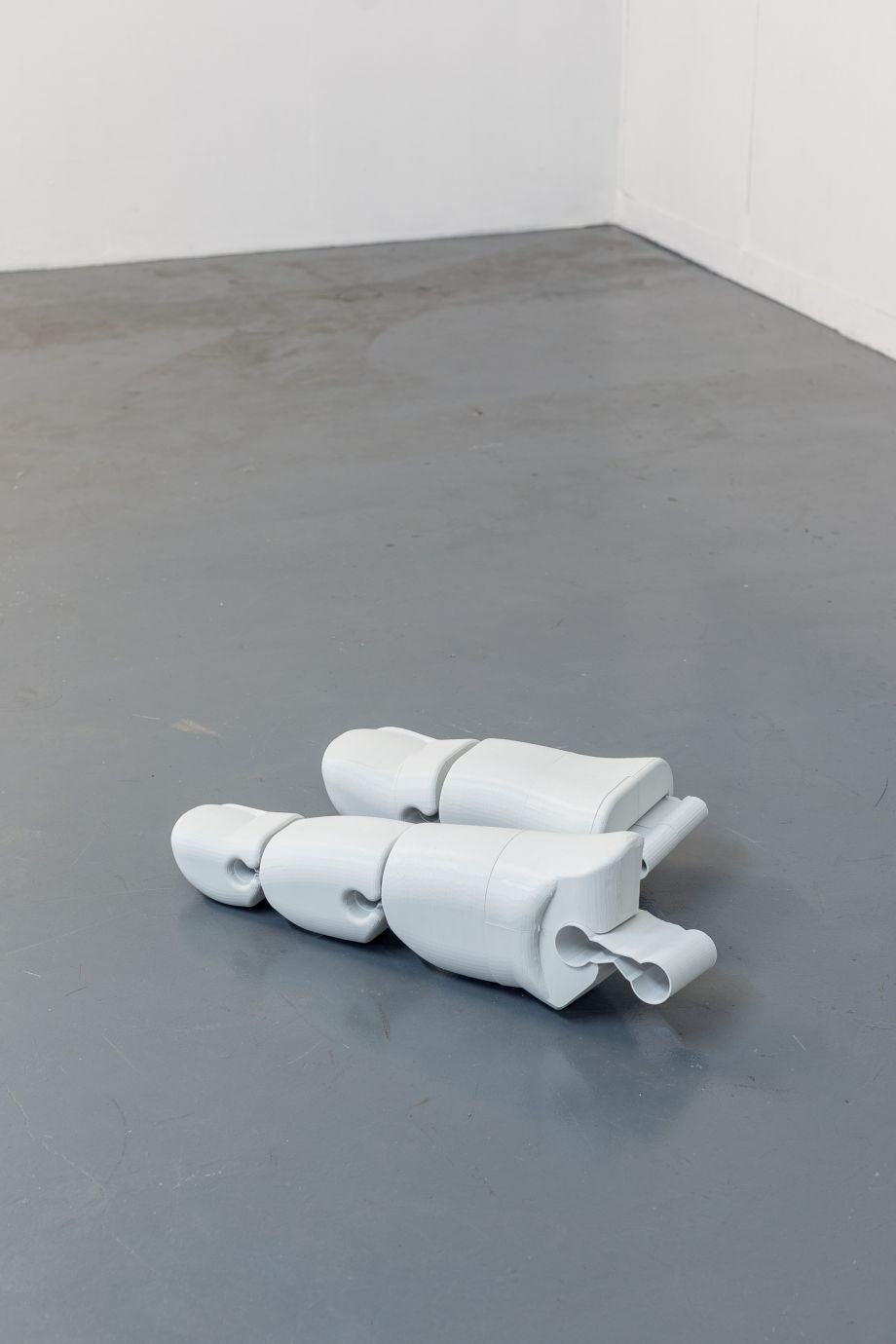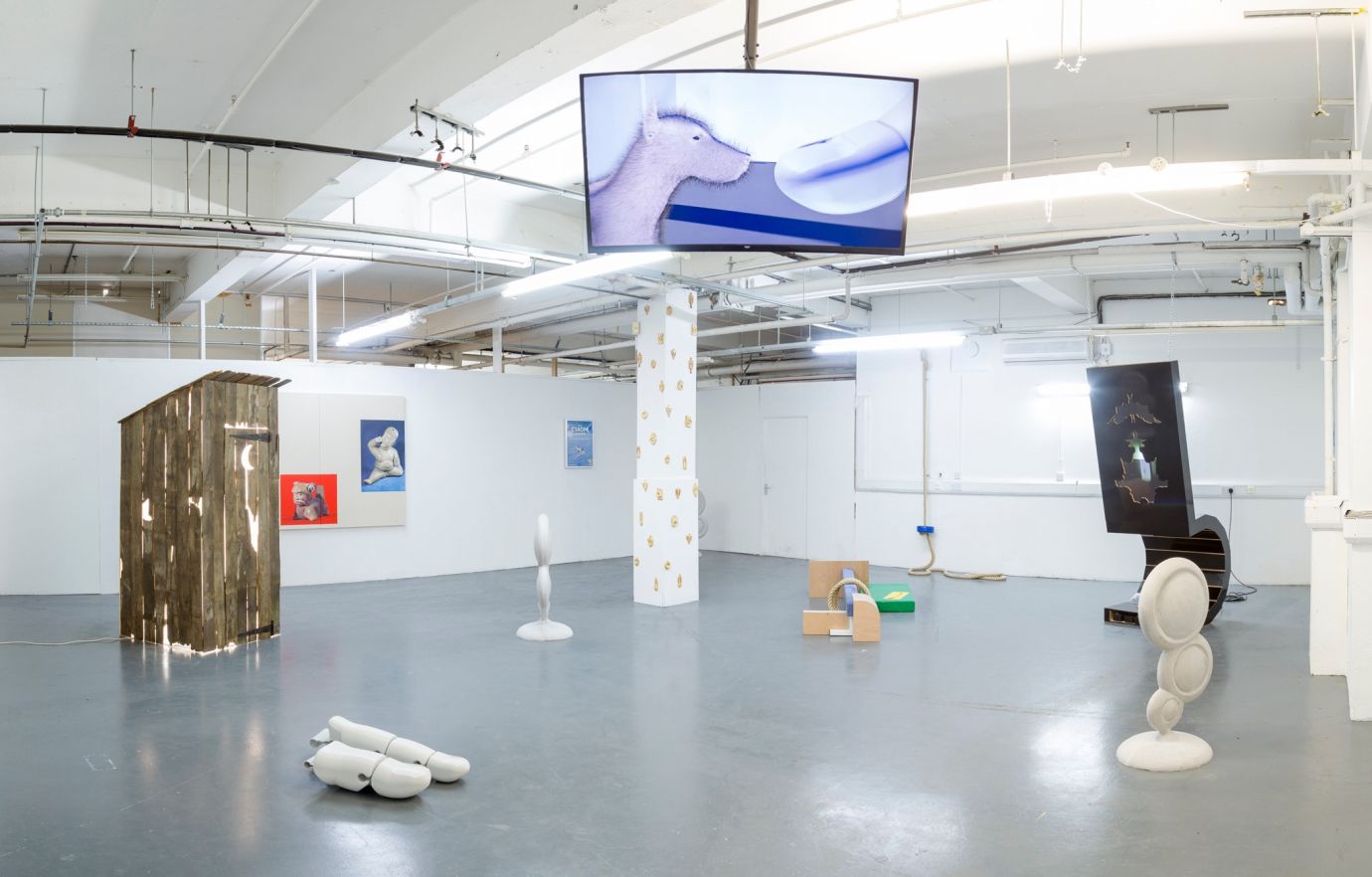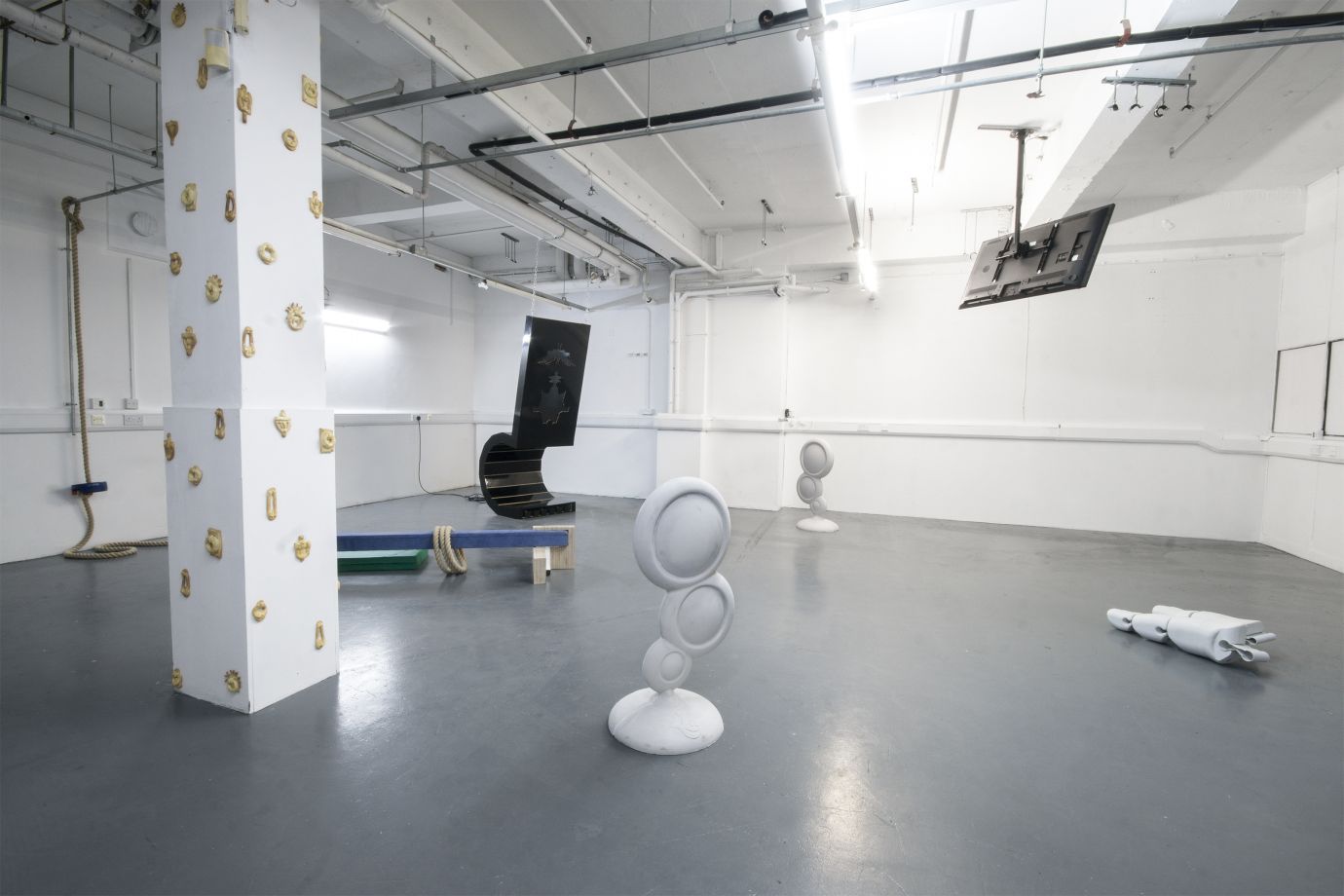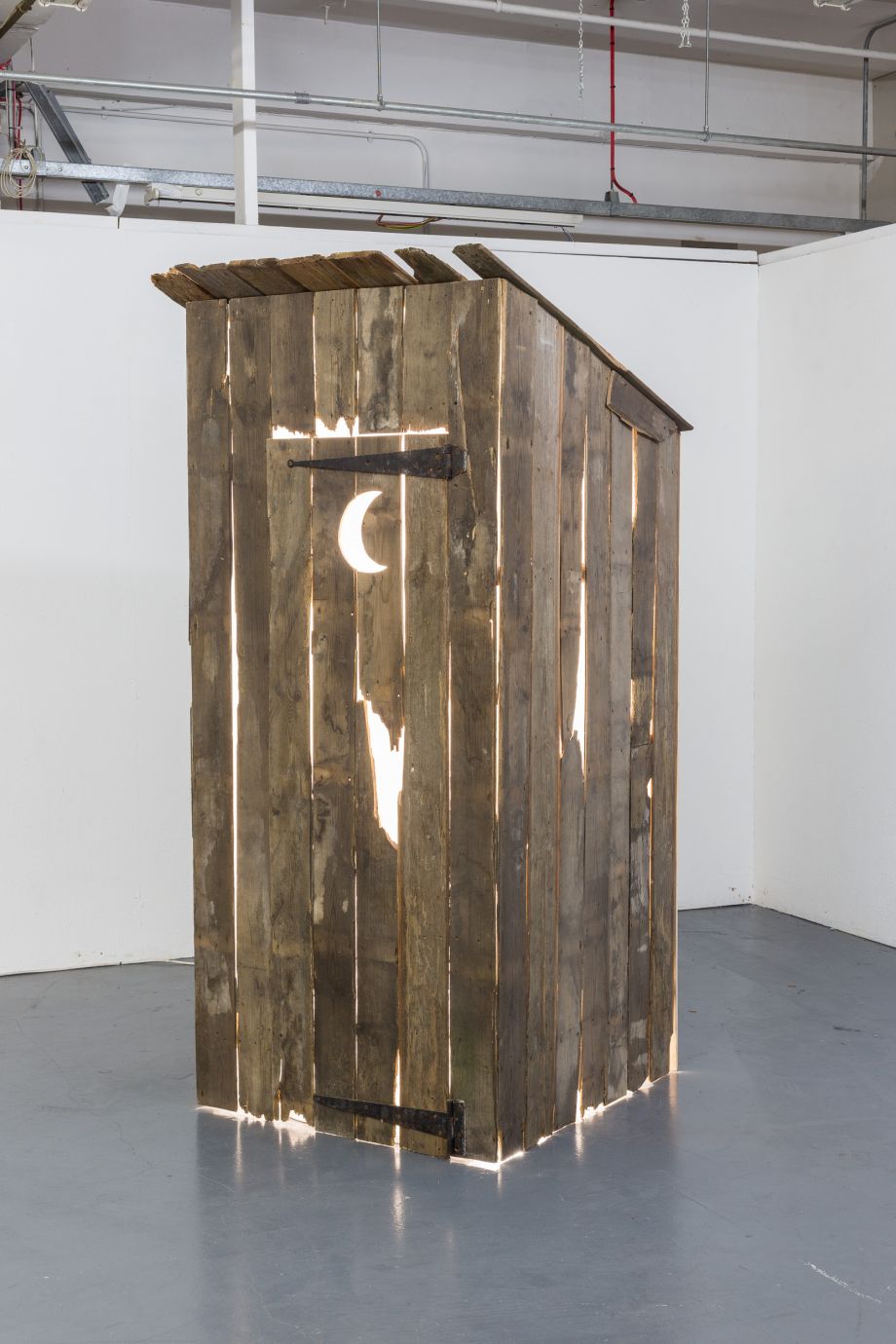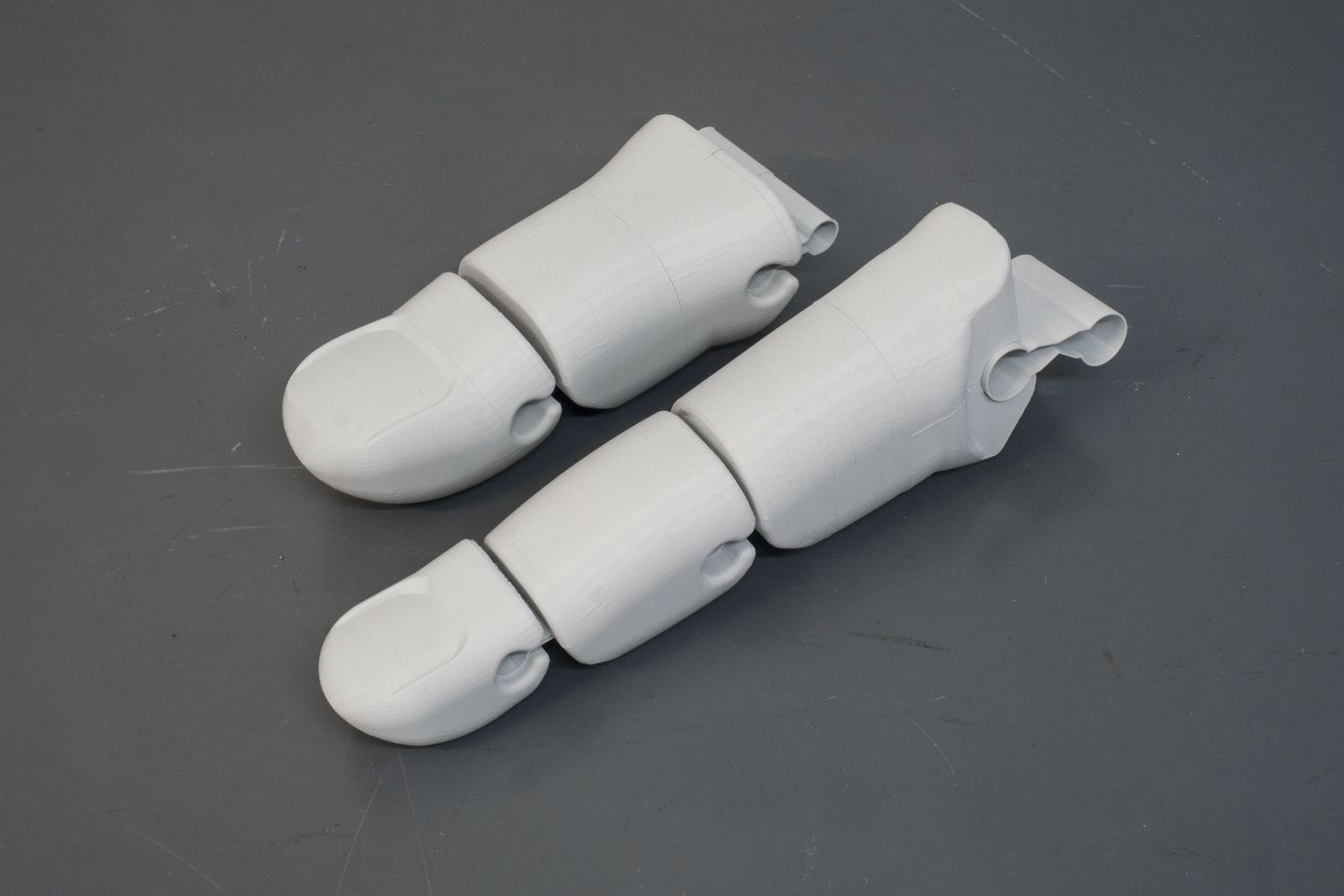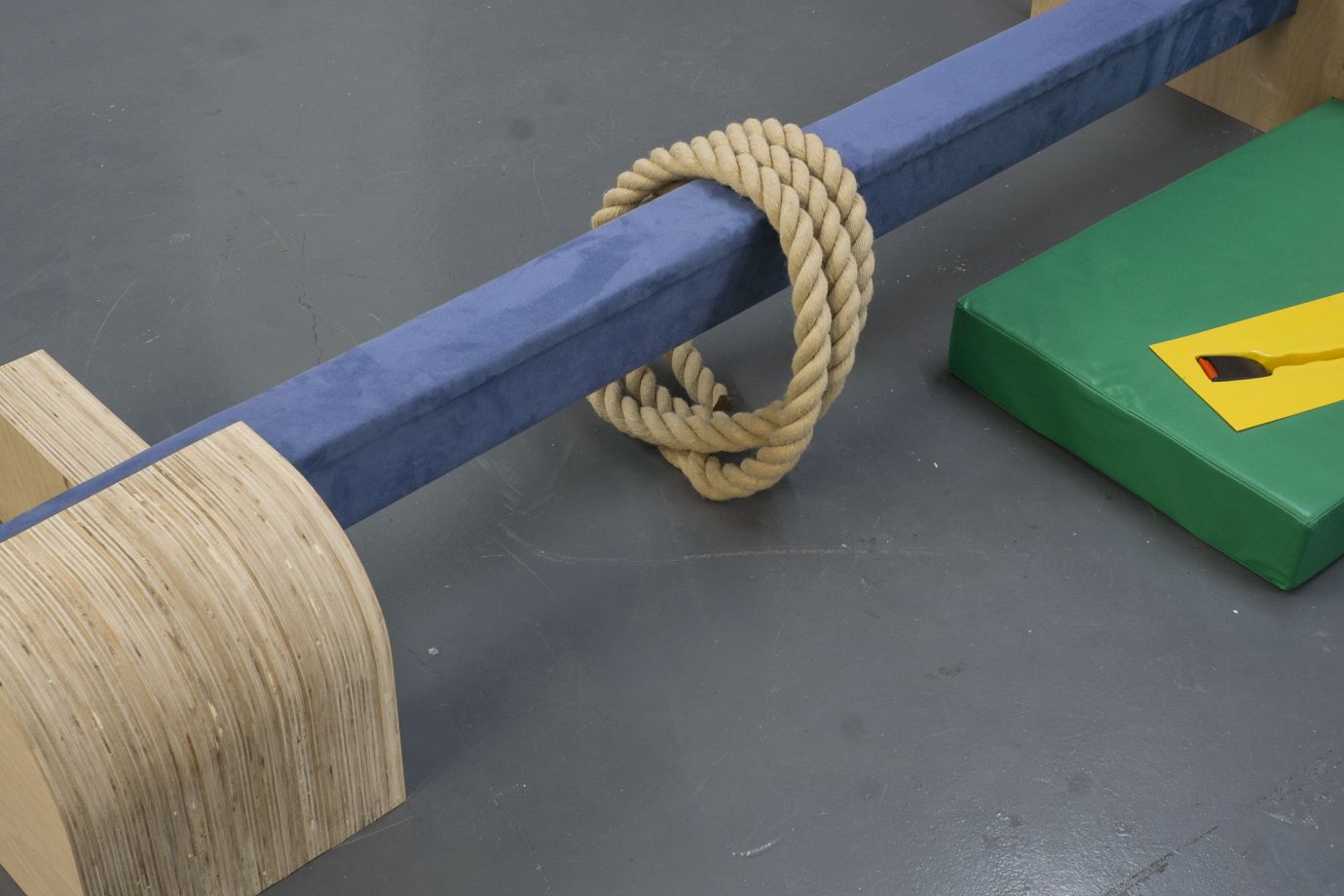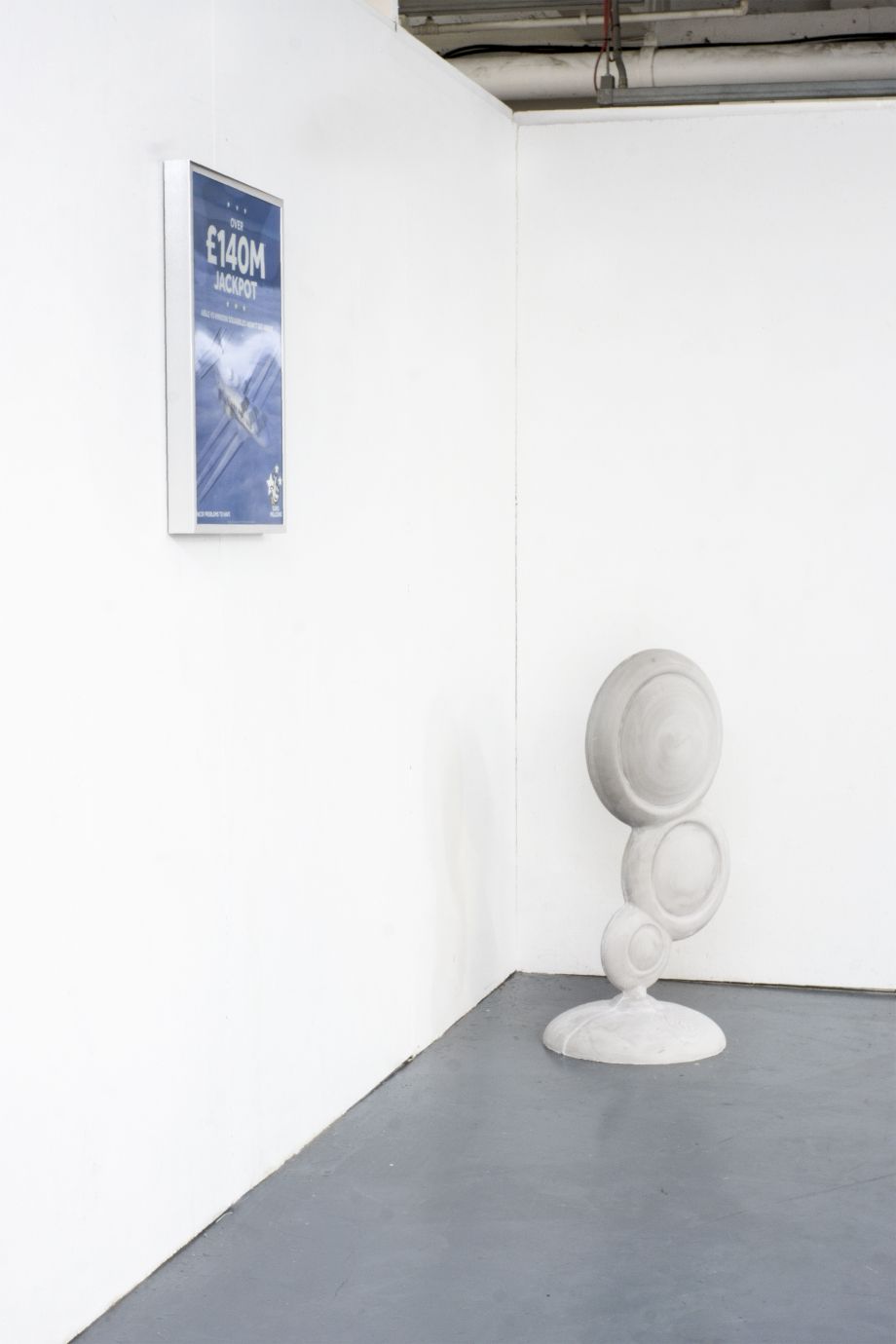Ted handpicked the works on show. Many of the works on display reference history both in an artistic and social context. However, the visualisation of the past is achieved not only through innovative and unconventional methods but also by intricate and meticulous execution. This fine attention to detail plays with the idea of what it means to have works of art with finite and mundane associations, like a newsagency sign, gymnastic equipment, or old door knockers made from biscuits, in the context of an art gallery.
Speaking to Realf Heygate and Nathaniel Faulkner, two recent graduates of University of the Arts London, allows for an insight into the show from an artist’s perspective. Realf describes his piece as a summary of the themes he has been developing for the past year: looking at authenticity, originality and the ambiguity of those terms today. To him, this idea best manifests itself through painting, traditionally understood as a ‘finite, authentic’ art object. Working mostly with museum artefacts – which are also defined by their authenticity – as subjects of his painting, he explains the process of working on this particular piece for the exhibition. “So this painting is of a double page spread from an art history book. I often find that when artworks are reproduced in books, it becomes very distanced from the original objects. I’m interested if I meticulously paint from those photographs, does it reauthenticate those objects at all or is it another layer of distance away from the original object?”

